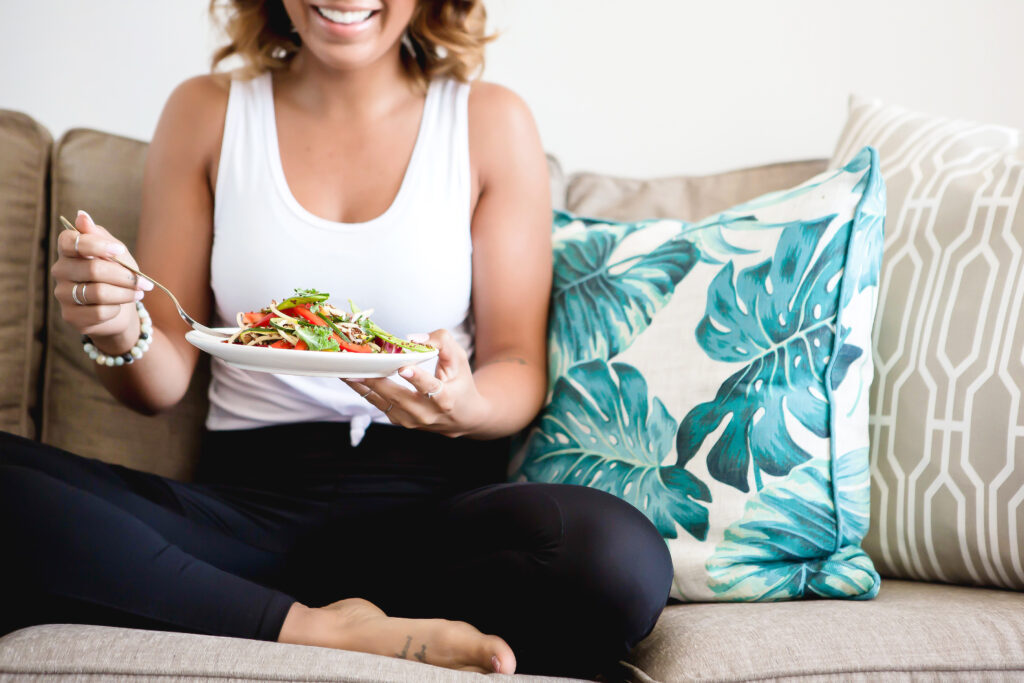
As a T1D mom, you’re doing an incredible job balancing the many demands that come with supporting your family’s health. From keeping an eye on blood sugar levels to managing daily schedules, there’s a lot on your plate! But what if the key to building a healthier T1D family starts with the food choices you make and how you approach them together?
That’s right—your food story matters. How we think about food, the habits we’ve formed, and the culture around food in our families all influence how we nourish ourselves.
And when it comes to living and thriving with type 1 diabetes, creating a healthy relationship with food can play a major role in your family’s success. In today’s post, let’s explore how you can rewrite your food story to create healthier habits for you and your family—one meal at a time.
What’s Your Food Story?
Before we dive into making changes, let’s take a moment to reflect. Have you ever stopped to think about your food story? What are your thoughts around food? How was food approached in your household, and how have those beliefs shaped your family’s food habits today?
These are powerful questions that can help you better understand how to create healthier, more intentional food choices moving forward. So let’s grab a journal or notebook and reflect on these questions:
When you think of food, what comes to mind? Is it comfort, celebration, stress relief, or something else?
When, and from whom, did you first learn about food? How did your early lessons on food shape your relationship with it?
What was the food environment like growing up? Was food centered around family meals or convenience? How did that affect your current habits?
What is your relationship to food today? How does your family approach food now?
Please take your time with these reflections. If anything feels heavy or emotional, be sure to be really gentle as you explore further. Remember, these reflections are for you, and there’s no right or wrong way to answer.
Let’s Now Look Forward
Now that we’ve reflected, let’s think about where you want to go from here. Understanding your food story helps you honor what’s working and gives you clarity to make changes that align with your goals.
What surprised you most when reflecting on your food story? Were there any realizations that stood out?
In regards to your food story, what are you most proud of? What healthy habits or rituals are already working for you?
What practices or traditions do you want to continue with your family? Is there a food-related ritual that you want to carry forward?
Are there practices you want to leave behind? What habits or food-related patterns no longer serve you or your family?
Rewriting Your Food Story
Remember, change doesn’t need to happen overnight. Small steps can lead to big changes, helping you create a healthier T1D family.
Here are a few small actions to help you foster a healthier eating environment for you and your family:
- Commit to introducing one new vegetable into your family’s meals each week.
- Experiment with simple meal prepping—like chopping veggies or making easy snacks on Sundays.
- Focus on mindful eating—turn off the TV, put down your phone, and take a few minutes to really connect with your food and family.
- Look for simple blood sugar-supportive swaps—such as using almond flour for baking or cauliflower rice instead of carb-heavy white rice
Keep Moving Forward
You’ve done an amazing job reflecting on your food story! Change takes time, but by reflecting, you’ve already taken the first step. Remember, you don’t need to make drastic changes right away. Start small, and each step you take will help you create a healthier T1D family.
As always, I’m here to support you on this journey. You don’t have to do it alone, and I encourage you to check-out how health coaching may be the perfect complement to your T1D journey.
You’ve got this, mama. Keep shining, and remember that the support you need is just around the corner.
Until next time, sending you and your family tons of love!
Allee
This blog is made for informational and educational purposes only. It is not medical advice. The information in this blog is not intended to (1) replace a one-on-one relationship with a qualified licensed healthcare provider, (2) create or establish a provider-patient relationship, or (3) create a duty for us to follow up with you.
Leave a comment +